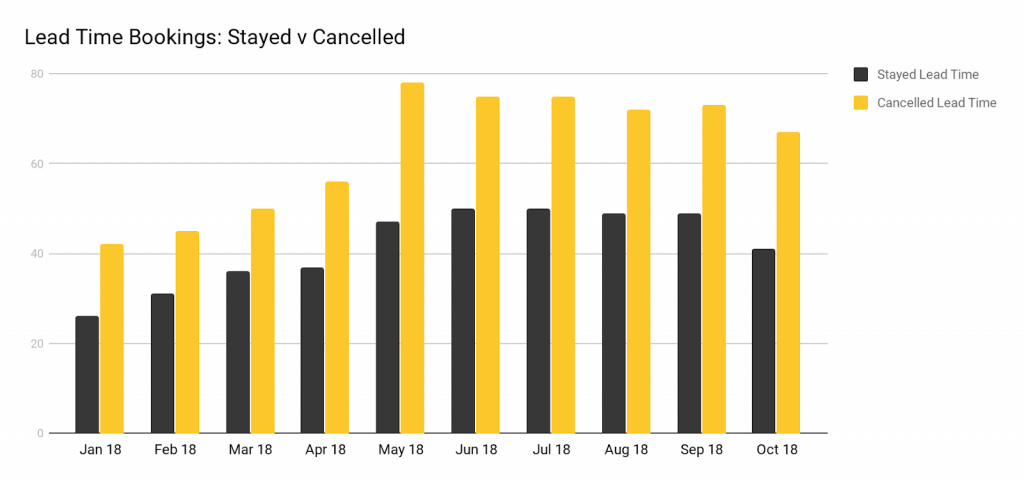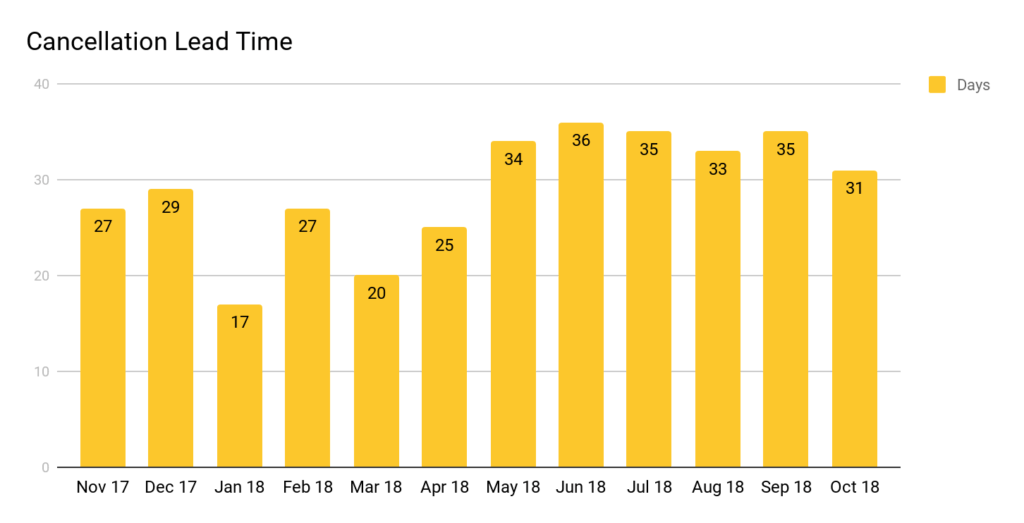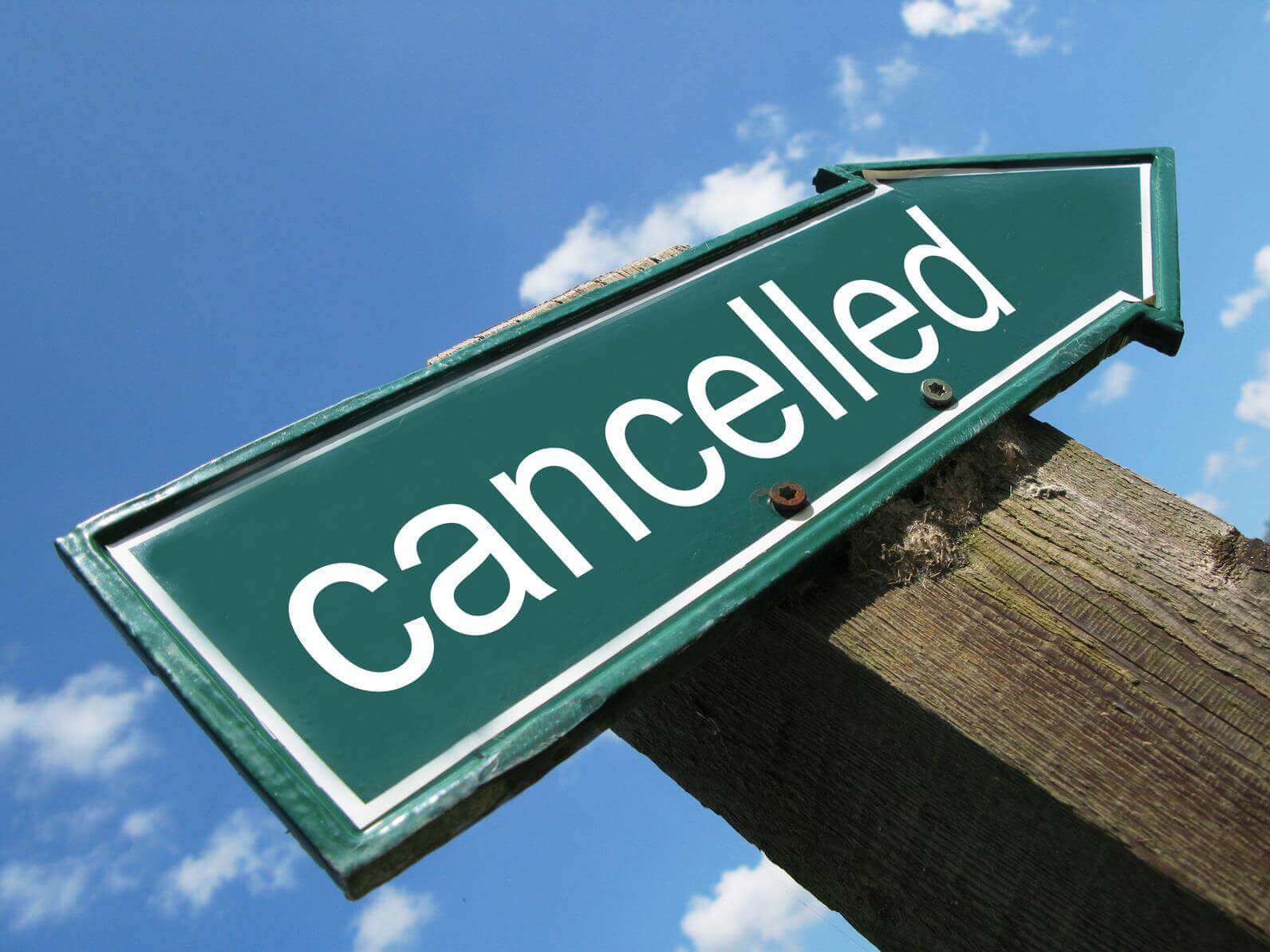Cancellations are every hoteliers inevitable worst enemy. Even if you manage to recapture some of your lost bookings close to stay dates, they will still cost you.
NB: This is an article from NetAffinity
Cancellations distort hotel demand levels, boosting them with a false high. They also lead the hotel to fill too fast with “guests” who have multiple other hotel bookings made for the same period to keep their options open. Your hotel may appear full to the true guest who has finished browsing and made the decision to book with you. However, in reality, cancellations from early bookers are just around the corner. How can hotels manage these bookings and deal with high cancellation rates?
Compare stayed vs cancelled lead times
We had a look at the lead time for bookings that end in cancellations in comparison to stayed bookings. Generally, bookings that aren’t set in stone and lead to cancellations are made further in advance. For short lead bookings, the guest tends to be more certain. For example, in October 2018, the lead time for bookings that resulted in cancellations was 67 nights. When compared to a 41 night lead time for stayed bookings, it is clear that a longer lead time should be the first indication of a cancellation. However, this may vary from hotel to hotel, so monitor your lead times from each channel, online and offline.

Focus on each channel’s cancellation rate
OTAs tend to get the blame for the bulk of hotel cancellations, and understandably so. They encourage guests to reserve a room whilst still browsing around, assuring them that they’re not tied down to anything. Take booking.com’s ’tip’, for example:

However, here at Net Affinity we’ve seen an increase in the percentage of cancelled bookings on hotel websites over the past year – from 9.6% in October 2017 to 11.4% in October 2018. This is not to say that the percentage will shoot up to the 30-50% cancellation rates that OTAs see. However, guests are becoming more empowered and informed, keeping their options open by making multiple bookings in advance. So, we do expect to see this continue to rise. Of course, every individual hotel will see slightly different trends. It’s vital that you evaluate your hotel’s own cancellation rates on each channel.
Track how far out guests are cancelling ahead of their stay
Finally, we’ve analysed how far out guests are cancelling ahead of their stay. Looking at an average lead time won’t tell you much- focus on the seasonal variation. This year’s cancellation lead time report followed a similar pattern to last year’s. Bookings in January were cancelling only 17 days out, however, during the summer months the cancellation lead time is well over 30 days. On the ground this means you have less time to resell that room when demand is lower, but during the summer when demand is not a problem, it’s much easier to resell the room.

Using this data wisely
Once you have the data, you can start acting on it. Our charts clearly show some annual trends- the bookings that cancel are booking much further out and the high seasons see a longer lead time for cancellations. When you track your cancellation rates over time, you can predict how many bookings are likely to become stays and how many will end up as cancellations. This lets you adjust your demand levels from there and use overbooking practises. Tracking the pace of cancellations by days prior to arrival enables you to determine how overbooked a given date in future should be. You can read our tips to overbooking here.
Tactics to Prevent Cancellations
A pre-stay email will allow you to upsell hotel facilities and remind guests of cancellation policies. Hopefully at that stage if they need to cancel they will advise you immediately, giving you more time to resell the room.
Also, consider promoting a Prepaid or Advance Purchase rate. If the guest pays at the time of booking, they receive a small discount. Lastly, consider more restrictive cancellation policies on channels with larger numbers of cancellations. This will need to be checked against your OTA contracts, but if you’re able to reduce cancellations on channels with more restrictive cancellation policies, you’ll reduce uncertainty.
Conclusion
Hotel cancellations will undoubtedly be difficult to combat. In today’s world of endless options, guests have learned to make multiple hotel bookings before their final selection. Furthermore, if a guest needs to cancel, they will. However, the more aware you are of your cancellation rates and where they are coming from, the better you’ll be able to create a plan and stay in control! The techniques mentioned above will help you to control and recover from high cancellation rates.





